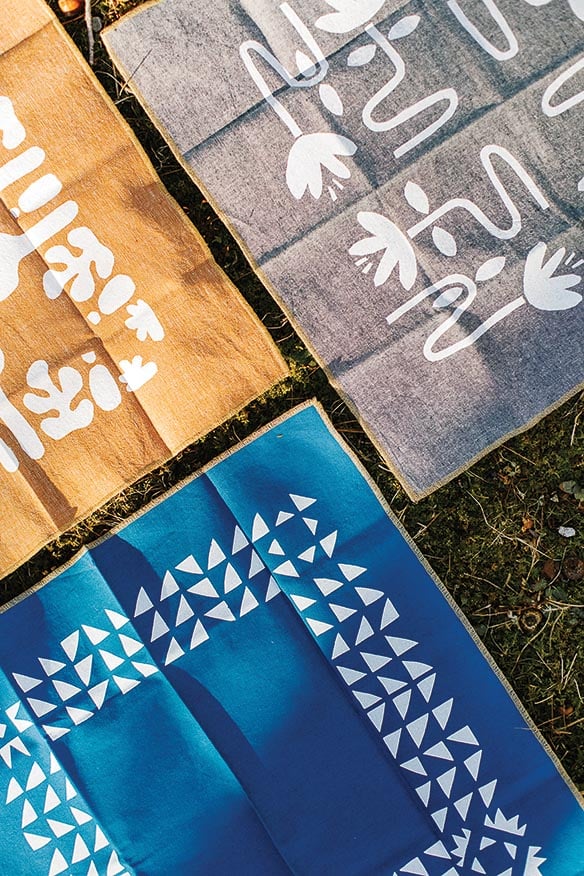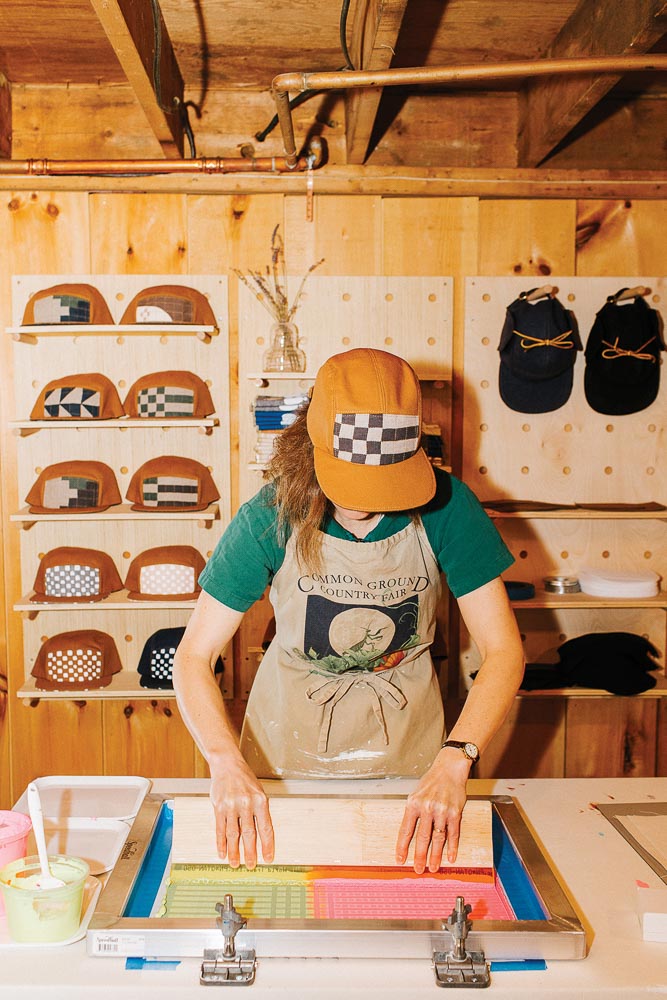By Ann Pollard Ranco
Photographed by Jamie Mercurio
From our March 2023 issue
Sarah Johnson’s favorite style of brimmed hat has almost always been the playful and nostalgic five-panel — a shallow-crowned, flat-billed cap constructed with five separate pieces of material. But when she looked for one for her six-month-old son, in 2016, she didn’t find any children’s-size options she liked. Johnson, then working as a wildlife biologist, had been sewing and altering clothes since she was a teenager, and she decided to make a five-panel for her son. That first, tiny hat that she made at home in Yarmouth, from an old pair of her husband’s caramel-brown work pants, elicited compliments on the playground and requests for custom orders.




Because they’re printed by hand, no two hats are alike. “There are always slight variations that lead to totally unique final products,” Johnson says.
Johnson continued to make hats for her growing family, and she officially started Sundew Sewing Company — named for the carnivorous plants she once studied — in 2020, when she shifted away from wildlife biology to be a stay-at-home parent. Now, Johnson, who is 39, also sews flap caps (wool hats with brims and ear flaps), small bags, and bandanas that feature her original screen-printed designs. But her signature is still the five-panel, which she sells through her online shop and at craft fairs. Many of her hats, made with canvas, denim, wool, or corduroy, are adorned with screen-printed or quilted designs, from colorful, abstract shapes and checkerboards to strawberries and coffee mugs. “Sundew hats express a sense of individuality,” Johnson says. “The front panel makes the best mini-canvas, where I get to create bits of art to send out into the world.”
Tell Us More
Sarah Johnson

Why do you make your hats so lightweight and flexible?
All of my hats are soft brimmed, made with heavyweight, non-woven interfacing fabric. They’re squishy, but they will always spring back out to flat. So if you fold up a hat into your beach bag or your back pocket, you put it back on and the brim will spring back out. And if it gets really put through the wringer, you can just iron the brim out flat again.
Any favorite embellishments?
I really love to throw myself into the details of quilting. I learned how to quilt in my 20s because I was inspired by postage-stamp quilts that my great-grandmother-in-law made. I still love quilting, so it’s a way for me to incorporate it into something that you can wear and enjoy every day. It’s like a little gemstone of a quilt.
How do you screen print your hats?
The designs that I screen print are my own original designs. I try to incorporate an element of playfulness in my prints, through color and pattern choices. Before I can sew anything, I need to print the fabric with my water-based, eco-friendly inks. I usually use a stencil, which I cut out of paper using an X-Acto knife, and put it in between the screen and the fabric. Then, when you pull the ink down across the screen, the adhesion of the ink sticks the stencil to the screen.
You’ve done some collabs too, right?
In November, I released a collection I worked on with Gardiner printmaker Allison McKeen, and it was a dream come true. She designed 18 one-of-a-kind prints of chairs, fruit, smiley faces, and more that I stitched the front panel of my hats with. I’ve also used surplus materials from Conscious Clothing, a slow-fashion brand in Michigan, for quilted designs. I see myself doing more with clothing companies to reduce waste — I think it helps fuel my creativity.




